
Disaster Community Formation Initiative
Architects and municipalities collaborate during extraordinary events: social responsibility and human-centered architecture.
Disasters and other large-scale extraordinary events and their impacts represent not only destruction but also a societal opportunity. The South Moravian tornado in June 2021 prompted collaboration among architects, students, local officials, community crisis responders, and others. The outputs of this collaboration integrate socially responsible architecture into crisis preparedness and highlight the benefits of an interdisciplinary approach to human-centered architecture.
Almost two hundred houses had to be demolished based on orders from building authorities. Architectural studios edit! architects, desk architects, Marco Maio Architects, and YUAR Architects, under the auspices of the Czech Chamber of Architects and the Czech Chamber of Authorized Engineers and Technicians in Construction, responded by establishing the initiative Obnova21. The architects provided the tornado-affected people with project documentation or directly designed family homes for free - pro bono. Architecture reached out to people where it was most needed at that moment.
Generally speaking, architecture is a slow profession. Designing, approving, and building a house usually takes years. In contrast, when a tornado strikes, an entire village can disappear in a matter of minutes. And people strive to return to their homes as soon as possible. If an architect wants to help at such a moment, they must act quickly. This assumes that both parties will be prepared for collaboration.
The architects of Obnova 21 are aware that they arrived late after the tornado. Nevertheless, thanks to their designs, several people are now living in homes that contribute to a harmonious impression of the South Moravian community. Externally, they respect the architectural character of the place and their internal layouts cater to the needs of current residents. "An architect usually has two meanings in mind when designing a house – private and public. Its inhabitants should enjoy living in it, and its neighbors should like walking around it. This means negotiating – being flexible and communicating, communicating, communicating," says architect Lukáš Janáč from the YUAR studio.
At the seminar marking the first anniversary of the tornado, representatives and residents of affected municipalities, representatives of the Czech Chamber of Architects, teachers and students from the Faculty of Civil Engineering at ČVUT, teachers and students from the Faculty of Social and Pastoral Work and Community Crisis Collaboration at the Protestant Theological Faculty of Charles University, as well as national and local representatives of the Czech Red Cross gathered. Together they learned to conduct a public discussion about architecture and neighborhood concerning proposals for Moravská Nová Ves.
People from the field, people from the academic environment, architects, sociologists, and municipal representatives collaborated throughout the year. Inspirations were contributed by individuals from City Upgrade, the CARITAS Higher Vocational School, the Faculty of Arts at Charles University, and Tyfloservis – an organization assisting the visually impaired. One of the goals of the initiative Shaping the Community After Disasters is to learn to "think of all" interprofessionally, thus utilizing human rights-based universal design as design for the coexistence of diversity. "Architects ask: Is it beautiful? Is it pleasant? We ask: Does it connect people? Does it include them in the community?" explains the community perspective of Bohumila Baštecká.
"Preparedness is essential during natural disasters. If residents and representatives of municipalities are not aware of the possibilities of collaboration with architects after disasters, they will not utilize them. That's why we want to raise and maintain the awareness of the lay and professional public, educate, learn from each other, and exchange information," explains Radek Váňa, founder of the Idealab agency, which has long been devoted to promoting Czech architecture.
The initiative Shaping the Community After Disasters invites collaboration. Knowing about each other interpersonally and interprofessionally is crucial for timely assistance and its sustainability.
- A tangible outcome of the tornado collaboration between architects and others were student proposals on how to address the public space in the town of Moravská Nová Ves that was left vacant by the tornado. The proposals were symbolically handed over to the mayor at a seminar marking the first anniversary of the tornado.
- Part of the collaboration is the initiative Obnova 21, which creates architectural designs for residents who lost their homes to the tornado for free. This initiative led the Czech Chamber of Architects to establish a fund and a working group for creating architectural designs free of charge in the context of extraordinary events.
- Possibilities for future interdisciplinary collaboration include simplifying architectural public competitions for municipalities in the context of disasters and incorporating architecture into the crisis preparedness system. This is linked to educating the lay and professional public about the benefits of human-centered architecture in shaping environments for good coexistence of diverse individuals and groups.
The impacts of the 2021 tornado brought a societal response: among other things, architecture came closer to people
The South Moravian tornado of June 2021 struck on an unprecedented scale for our country. Images of destruction from affected municipalities inspired solidarity among people from across the nation.Almost two hundred houses had to be demolished based on orders from building authorities. Architectural studios edit! architects, desk architects, Marco Maio Architects, and YUAR Architects, under the auspices of the Czech Chamber of Architects and the Czech Chamber of Authorized Engineers and Technicians in Construction, responded by establishing the initiative Obnova21. The architects provided the tornado-affected people with project documentation or directly designed family homes for free - pro bono. Architecture reached out to people where it was most needed at that moment.
Climate change leads to preparedness built on collaboration and resilience
The South Moravian tornado in 2021 was not the first tornado in our country. We already know it was not the last either. The major Moravian floods of 1997 were also not the first floods. However, they were extensive enough to result in the desired systemic change - the establishment and legalization of an integrated rescue system. The tornado of 2021 or the weeks-long fire in the Czech Switzerland region in 2022 may hold similar significance for architecture. Architects have previously expressed their views on the consequences of climate change and the preparedness of residents for them (for example, through the publication We Live in a Flood Zone). Now it seems that the time has come for a systemic response.Generally speaking, architecture is a slow profession. Designing, approving, and building a house usually takes years. In contrast, when a tornado strikes, an entire village can disappear in a matter of minutes. And people strive to return to their homes as soon as possible. If an architect wants to help at such a moment, they must act quickly. This assumes that both parties will be prepared for collaboration.
The architects of Obnova 21 are aware that they arrived late after the tornado. Nevertheless, thanks to their designs, several people are now living in homes that contribute to a harmonious impression of the South Moravian community. Externally, they respect the architectural character of the place and their internal layouts cater to the needs of current residents. "An architect usually has two meanings in mind when designing a house – private and public. Its inhabitants should enjoy living in it, and its neighbors should like walking around it. This means negotiating – being flexible and communicating, communicating, communicating," says architect Lukáš Janáč from the YUAR studio.
Shaping the community after disasters
Communication and flexibility are also the creed of community crisis workers who focus on shaping the community as a society where people care for each other after disasters. "The goal is to harness the tremendous energy that a disaster brings for good. We strive to ensure that the spontaneous solidarity and determination of the first days after the disaster do not end with those early days. We want the gains from the disaster to become ingrained in the 'blood' of the community, to become a sustainable part of neighborhood coexistence," adds field crisis worker Bohumila Baštecká. "Our main method is networking and connecting. Thanks to this, we connected with the Obnova21 initiative and started collaborating."At the seminar marking the first anniversary of the tornado, representatives and residents of affected municipalities, representatives of the Czech Chamber of Architects, teachers and students from the Faculty of Civil Engineering at ČVUT, teachers and students from the Faculty of Social and Pastoral Work and Community Crisis Collaboration at the Protestant Theological Faculty of Charles University, as well as national and local representatives of the Czech Red Cross gathered. Together they learned to conduct a public discussion about architecture and neighborhood concerning proposals for Moravská Nová Ves.
People from the field, people from the academic environment, architects, sociologists, and municipal representatives collaborated throughout the year. Inspirations were contributed by individuals from City Upgrade, the CARITAS Higher Vocational School, the Faculty of Arts at Charles University, and Tyfloservis – an organization assisting the visually impaired. One of the goals of the initiative Shaping the Community After Disasters is to learn to "think of all" interprofessionally, thus utilizing human rights-based universal design as design for the coexistence of diversity. "Architects ask: Is it beautiful? Is it pleasant? We ask: Does it connect people? Does it include them in the community?" explains the community perspective of Bohumila Baštecká.
What next: do we know about each other?
After the heroic phase of rescue, the consequences of the tornado led to recovery: new initiatives and communities were formed, new ideas and experiences emerged, and new houses are being built. The lessons from the tornado and the outcomes of the collaboration can easily fade away if they are not known."Preparedness is essential during natural disasters. If residents and representatives of municipalities are not aware of the possibilities of collaboration with architects after disasters, they will not utilize them. That's why we want to raise and maintain the awareness of the lay and professional public, educate, learn from each other, and exchange information," explains Radek Váňa, founder of the Idealab agency, which has long been devoted to promoting Czech architecture.
The initiative Shaping the Community After Disasters invites collaboration. Knowing about each other interpersonally and interprofessionally is crucial for timely assistance and its sustainability.
The English translation is powered by AI tool. Switch to Czech to view the original text source.


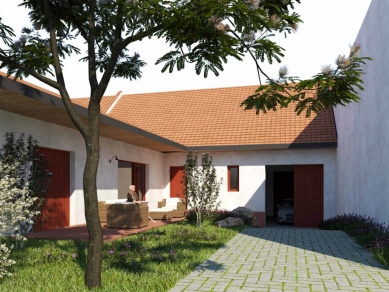



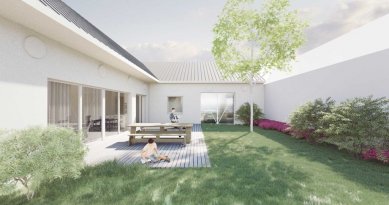
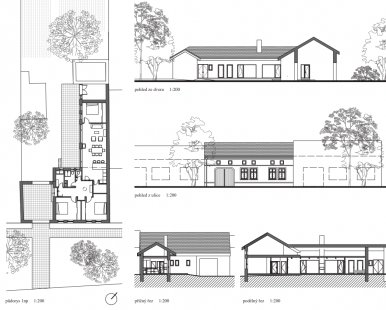

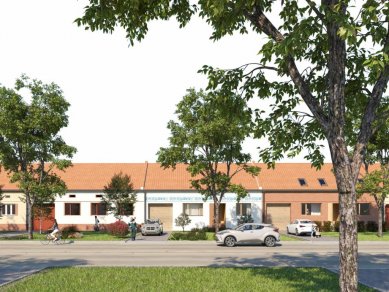
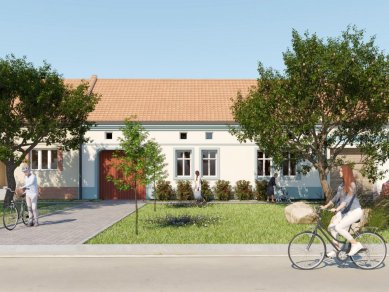
0 comments
add comment










